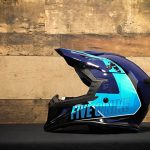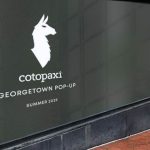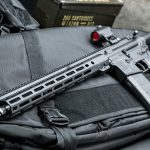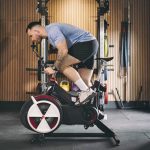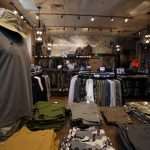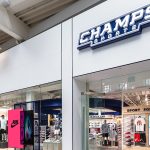At its investor conference last week, Foot Locker Inc. execs spelled out a plan to reinvigorate its product mix by bringing in more trend-right, exclusive and limited-edition merchandise from its key vendors, while expecting a spark from a host of newer vendors like Under Armour, Pastry and Punkrose. But Foot Locker also faces the difficult feat of accomplishing this task given its plan to significantly reduce inventory levels.
At the meeting hosted at its headquarters in New York, Rick Mina, CEO of Foot Locker Inc. USA, said a major priority for the company this past year has been, and continues to be, inventory management. The objective is to reduce inventories by store and increase overall inventory turns through more conservative planning and purchasing. As part of that, Foot Locker has increased the amount of footwear on quick response, and worked with its major suppliers to reduce product launches.
“Specifically, we plan on managing our inventory levels per store and turning our goods faster,” said Mina.
Indeed, the tight controls helped Foot Locker meet its first-quarter earnings expectations as inventories at the close were down 6.6% overall, and dropped 9% on a constant currency basis. In addition to the cash benefits gained through improved inventory controls, Mina said Foot Locker has also been able to lower shrink and achieve higher sales productivity in its stores.
Foot Locker is hoping tighter inventory controls will help it reach its goal of improving gross margins by 200 to 300 basis points this year. They fell 410 basis points to 26.1% in 2007 amid the promotional climate. It's also hoping better store productivity will revive sales/square foot, which dipped to $352 in 2007 from $365 in 2006.
But Mina also said having the most compelling assortment of unique, exclusive and limited-edition marquee product from its key suppliers remains the cornerstone of Foot Locker's success. As such, exclusive styles continue to increase year over year. And while Foot Locker continues to work with core vendors to come up with trend-right merchandise, it's also bringing in several new vendors such as Levi's footwear, Affliction and Punkrose that may better resonate with its core consumers.
On the apparel side, the company is looking to strengthen its branded apparel business with existing suppliers like Adidas and Nike while aggressively looking for “new trends and emerging brands that resonate with our core consumer.”
Mina said Foot Locker also continues to fine-tune each of its banners to reach distinct consumer segments and “ultimately allow us to reach a wider and more diverse customer base.” FL is also investing heavily in new flooring, lighting and fixtures that highlight new product trends and color combinations to enhance the overall shopping experience. At the same time, Foot Locker continues to close unproductive stores and has slowed its expansion plans.
Only 37 stores are set to open this year versus 106 new stores opened last year.
Keith Daly, president and COO of Foot Locker U.S., also underscored that the company has two primary strategies. One is a “more focused position around inventory management, which means better float, improved turns, reduced SKU count, buying smarter and overall doing more with less.”
The second is “clear and distinct banner positionings,” driven by pinpoint customer segmentation for each chain through store layouts and the bands each carry. Speaking to the chains he directs as an example, Daly likened the personality of the adult Foot Locker chain to MTV because it caters to “many different consumer types.” Kids Foot Locker resembles Nickelodeon and Footaction, BET.
Looking ahead, Foot Locker officials said they were encouraged that the company had achieved a low-singledigit comp increase in May, and a mid-single digit comp increase in June to-date. But given the environment, management indicated that it would likely maintain a conservative approach with a focus on improving profitability.
“We plan to remain very disciplined in our business practices and manage our business conservatively until we see signs of improvement in the external environment,” said Matt Serra, Chairman and CEO of Foot Locker Inc.
Foot Locker: The Foot Locker flagship chain will be positioned as “the king of footwear” this year while branded apparel is reestablished in a significant way. SKUs are planned to be reduced by 19% in the second half of the year, but the chain still plans to have the strongest assortment of marquee product with expected price increases in the category. Offering “meaningful exclusive product is a key strategy” – and not just an exclusive color of a style but an exclusive style.
In apparel, branded apparel is expected to see significant gains in the second half, driven by Nike, adidas and the introduction of Under Armour to 300 stores in early November. K1X and Affliction will also play “significant” roles in Foot Locker's apparel mix.
The chain has taken a “very strong stance” on driving full-price sales versus the promotional business, and therefore driving loyalty based on the consumer experience over price. Over the next 60 days, the stores will be repositioned to better highlight exclusives and limited editions. In total, Foot Locker plans to spend $18 million this year to refresh its stores by adding new lighting, flooring, shelving and other visual enhancements.
Kid's Footlocker: Kid's Footlocker will also focus on improving inventory management while emphasizing the same key authentic, marquee brands driving adult Foot Locker. A key category will continue to be retro basketball led by styles such as Jordan and adidas Superstar. Running is expected to see significant gains, led by Nike Shox and adidas.
On the apparel side, significant gains are expected for fall on the strength of Rocawear, Baby Phat and Under Armour. The chain, which continues to be a “very strong brand” for the company, will focus on marketing the chain's “unique position as being for kids only,” particularly at the store level. This is particularly apparent in its approach to visual merchandising as well as touches such as its new kids-friendly apparel tables.
Footaction: Targeting the “urban male trendsetter,” the chain plans to focus on delivering premium, street-inspired athletic lifestyle product and developing urban apparel hook ups. Owning a dominant position in marquee product is critical, and Footaction plans to see 10% growth in exclusive marquee styles. Key categories will be led by classic lifestyle products from Nike, adidas and Fila.
The chain is also trying to improve its store environment through upgraded lighting and flooring. New tables and mannequins are being introduced to tell a more coordinated apparel and footwear story. Compared to the flagship Foot Locker chain, Footaction's customer continues to be much more street savvy. Over 60% are “fashion-forward, trend setters where street culture defines their identity.”
Lady Foot Locker: The chain, aimed at the youthful, active women, is reducing its inventories by 10% this year and continues to expand its replenishment business to 25% of total footwear receipts. Over 50% of LFL assortments are exclusive. Nike and adidas will remain critical brands on the active lifestyle side in its mix with newer resources such as Converse Chuck Taylor, Pastries Baby Phat and Emu expected to complement them.
Champs Sports: A key differentiator for Champs continues to be its positioning around licensing apparel in the mall for college, NFL, NBA, MLB, NHL and Arena Football. Professional teams are its dominant category and every door has home team shops to support this positioning. Another growing part of its apparel mix addresses the rapid growth in mixed martial arts (MMA). The chain is the leading U.S. seller of TapouT, the top MMA brand; and has introduced new brands in the area such as Hitman, Premier Fighter and Cage Fighter.


